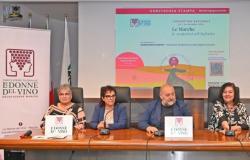Filippo Gasparini, president of Confagricoltura Piacenza, speaks on the topic of parking in Piazza Cittadella and in particular on the methods of implementation, finding analogies with other important infrastructures.
“We’ve been talking about it for twelve years. It seems like a film we’ve already seen – explains Gasparini – we live in a society that is afraid of everything and puts its head in the sand, as we have often already reported in agriculture. The system is the victim of people detached from reality, in this civilization great works are not done. Localism, and with it the works functional to a territory, is asphalted and we all flounder because alternative solutions are offered, apparently similar to the main work, but not with the same scope and future vision. Our agriculture needs a dam in Valnure and more effective water storage in Val Trebbia, just as the city needs car parks suitable for its development and which allow easy use of the historic centre, yet we are not moving forward, using the fences of a suffocating regulatory system”.
It seems like heresy to store water and consciously manage the alternation of periods of heavy rain with dry periods, but we have forgotten our own history, given that under the courtyards of the ancient Roman villas there were already cisterns to collect water rainwater and that the constructions of the ancient aqueducts are still clearly visible. “What about the Colosseum, St. Peter’s, Santa Maria degli Angeli or the Baths of Caracalla? – Gasparini comments – if the ancients had had the fears we have today they certainly would not have created these eternal masterpieces. If they had had cars they would have made adequate and huge underground car parks.”
The association takes this opportunity to express appreciation for the ancillary works carried out by the Reclamation Consortium which at least make water management more efficient. In place of the dam, lakes are proposed, less efficient and distributed over a larger surface area, in proportion to the stored volumes, works that are functional only if designed, as in the case of those being built by the Consortium, in support of a dam.
“But the main infrastructures – continues Gasparini – cannot be built. Similarly, we see the city as victim and deprived of a work that would serve it as the dam serves agriculture. A dam is an intensive work, with a precious multiple use, appreciated even for tourism purposes, and strategic for energy purposes. The great works that are needed must be done, if anything the best architects and landscape designers are employed to define and refine the relationship of the infrastructure with the landscape and the surrounding environment, so that it is harmonious with the context and multifunctional”. In Gasparini’s opinion, our city is a nice place to live, but there is a lack of strategic infrastructure for development, just like parking. “They are intensive infrastructures, with low impact because they are integrated into the context and have high added value. A car park near the heart of the city is needed, especially near the gate to Lombardy. Anyone crossing the Po bridge already finds themselves projected towards our centre, there they must find a place where they can leave their car. The Cittadella area absolutely needs to be redeveloped. Let the experts evaluate whether the underground car park can have the necessary capacity or not, but it is equally true that a car park is needed in the area. The proposal already has several successful precedents such as that of Verona, practically under the Arena and which is called Cittadella. The Verona car park has 251 spaces on the third floor underground and 800 on the second (always underground), 268 on the first (-1) and a further 50 on the surface. Other examples: the Toschi car park connected to the monumental complex of Pilotta in Parma, the car park in the center of Bolzano and more projects serving the center of Milan. Intensive infrastructures, precisely because they are more efficient and multifunctional, have proportionally less impact than extensive ones and creating them is an indication of responsibility and foresight. Likewise, the dams in our territory, now centuries old, are those that still allow thriving agriculture and the economy in the valley today. “The same rationality leads us to consider positively the project, unfortunately still in progress, of the iron hub. If logistics is necessary, let it be as intensive as possible – concludes Gasparini – concentrated in one area and with all the interconnections necessary to minimize impacts while increasing efficiency. Yes to parking, intensive and suitable for development, and yes to the dam. These are interventions that allow a historical leap in quality, which change the face of the economy and civilization of the place, but, above all, they are those works for which in thirty years the benefit of use will remain and all the aspects linked to the difficulties encountered, whether of a bureaucratic or political nature. Emancipating a civilization, a community and several generations with the creation of the infrastructure is worth some contingent problems and some compromises”.









